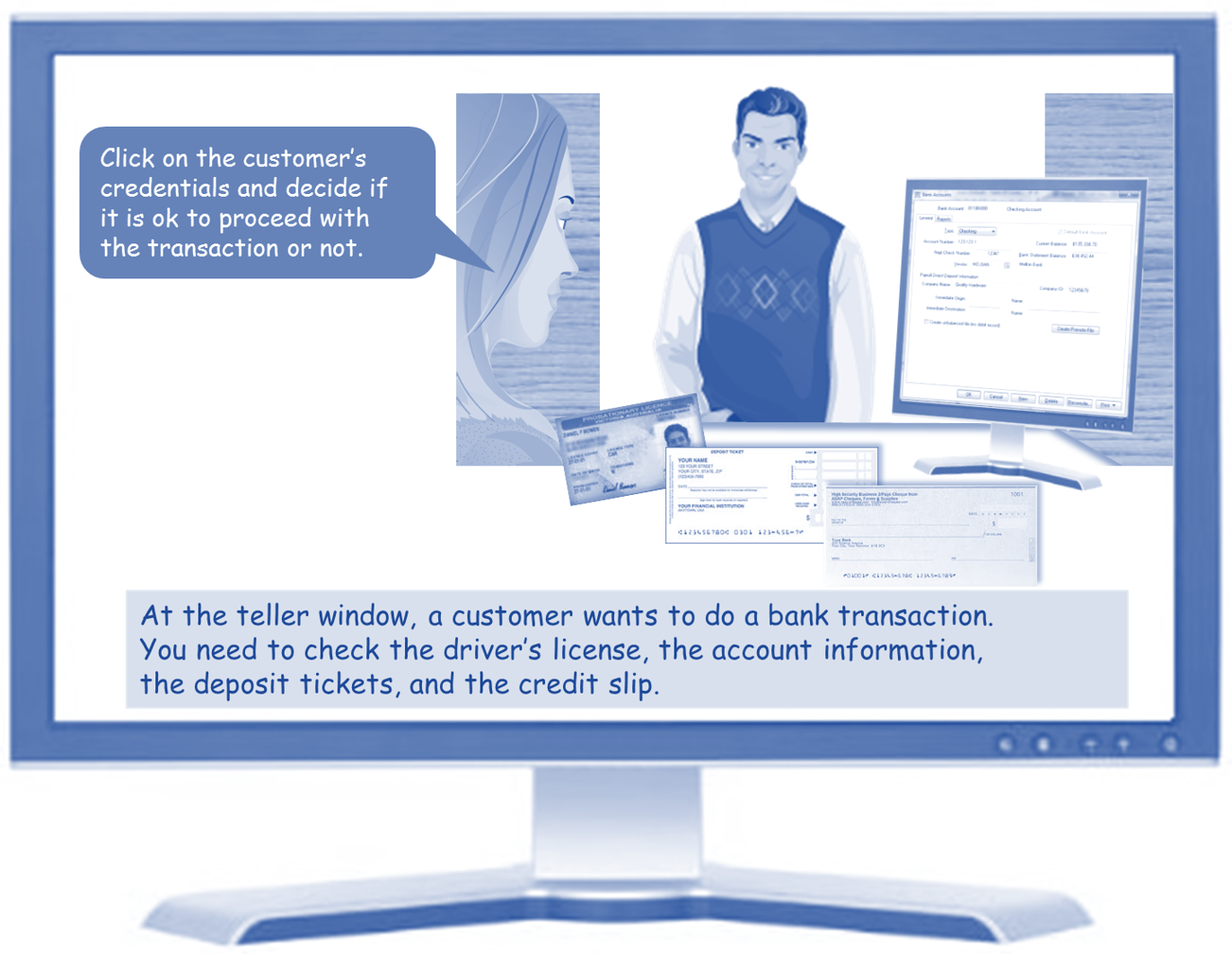Context – Challenge – Choices – Consequences
Use scenarios if consequences of mistakes have a severe impact, include a high level of risk or the outcome not obvious or delayed.
Usually with Blooms taxonomy levels create, evaluate, analyse and apply.

Context:
The learner assumes the role of a Bank clerk, working with customers on high street.
Challenge:
Check if the presented credentials are legitimate and the data is correct.
Consequence:
If the learner executes the transaction without following the proper procedure, the bank is prosecuted for negligence by the rightful account holder.
Context
An authentic, relevant scenario tailored to the target audience in a realistic setting. Make it as specific as possible include:
- Company size, industry, history, market situation, geographical location…
- Organisational hierarchy, Departments, C-suite, Team leaders, employees…
- Create a persona that matches the target audience.
- Workplace environment, sabotaging or supporting co-workers, deadlines and other stress factors.
Challenge with realistic Choices
The challenge may be a RE-ACTION to change, events, requests, incidents, conflicts, complaints etc.
- Analyse the challenge to identify probable outcomes, formulate strategies and identify issue.
- Make sure the challenge is applicable to the circumstances of your target audience.
- Offer realistic choices which require a deeper though process.
- Include supporting information (learning content) to help the learner make the best choice.
Consequences
It is important that the learner is presented with real world consequences. Avoid meaningless feedback like: “That is incorrect” or “That is correct”.
- Make sure the learner knows, that making mistakes is ok.
- Show realistic negative consequences
- Allow learners to try again and correct their mistakes.
- Encourage learners to seek more information.
- Load the learning content in the feedback.
Branching Scenarios
Apply the STAR technique – Situation – Task – Action – Result to your scenario design.

- Use a spread sheet to outline a scenario with challenges, choices and consequences.
- Think of consequences that achieve or support (negative) your Learning Outcomes.
- Think one ‘brilliant’ consequence, add one to two ‘not so good’ and one ‘bad’ consequence.
- Write a high-level plot that provides several intersecting routes to those consequences.
- Start with the ‘brilliant’ path and then add the other paths.
- Test your plot on SMEs and some learners to make sure it’s realistic and not too easy.
- After testing, add dialog and details.
Contact me to help you design relevant and engaging scenarios.
